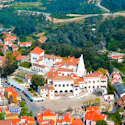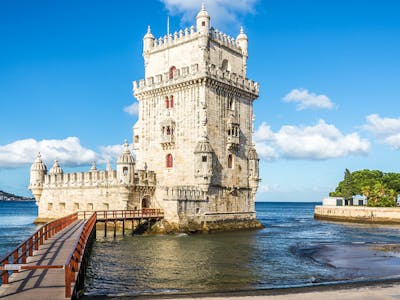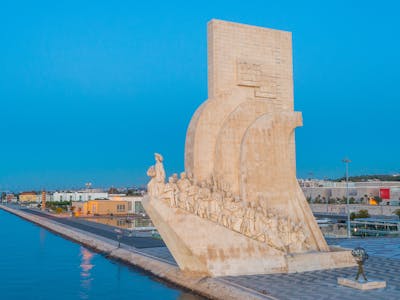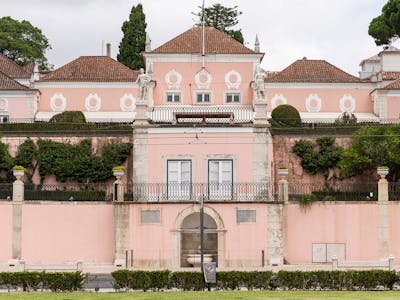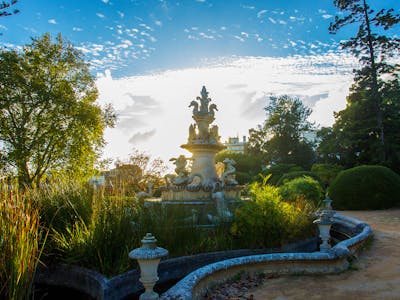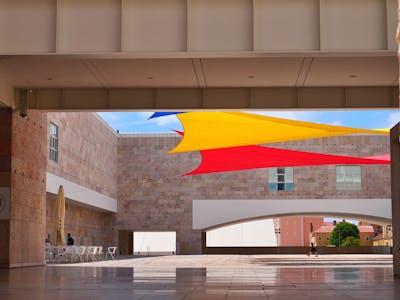Known as the ‘Mosteiro dos Jerónimos’ in Portuguese or the Hieronymites Monastery, the Jerónimos Monastery is a sixteenth-century monastery in Lisbon. Designated as a UNESCO World Heritage Site in 1983, the Jerónimos Monastery is one of the most visited attractions in the capital city of Lisbon.
The Jerónimos Monastery is the most impressive symbol of the power and wealth of Portugal during the ‘Age of Discovery’. True to its name, the Jerónimos Monastery is a religious building that is known all over the world for its rich history and ornate architecture. The Jerónimos Monastery is also home to the tombs of some of the most famous Portuguese royals, explorers, writers, and poets.
Jerónimos Monastery - In a Nutshell
Handy information
| ⏰ Suggested Duration: | 1 to 2 hours |
| ☀️ Best Time to Visit: | Between 12 pm and 2 pm |
| 💜 Must See: | Refectory Hall |
| 🎟️ Jerónimos Monastery Ticket: | €10 |
| 😍 Jerónimos Monastery+Belém Tower: | €16 |
Must-see
Refectory Hall
Tomb of Vasco da Gama
Chapter House
South Façade/South Portal
Church of Santa Maria de Belém
Things to know
Number of visitors per year: 2.5 million
Established: 1501
Architect: Diogo de Boitaca
Architectural style: Portuguese late Gothic or ‘Manueline’
Opening Hours And Address
October to April - 10 am to 5:30 pm
May to September - 10 am to 6:30 pm
Address : Praça do Império, 1400-206, Lisboa, Portugal
Get Directions
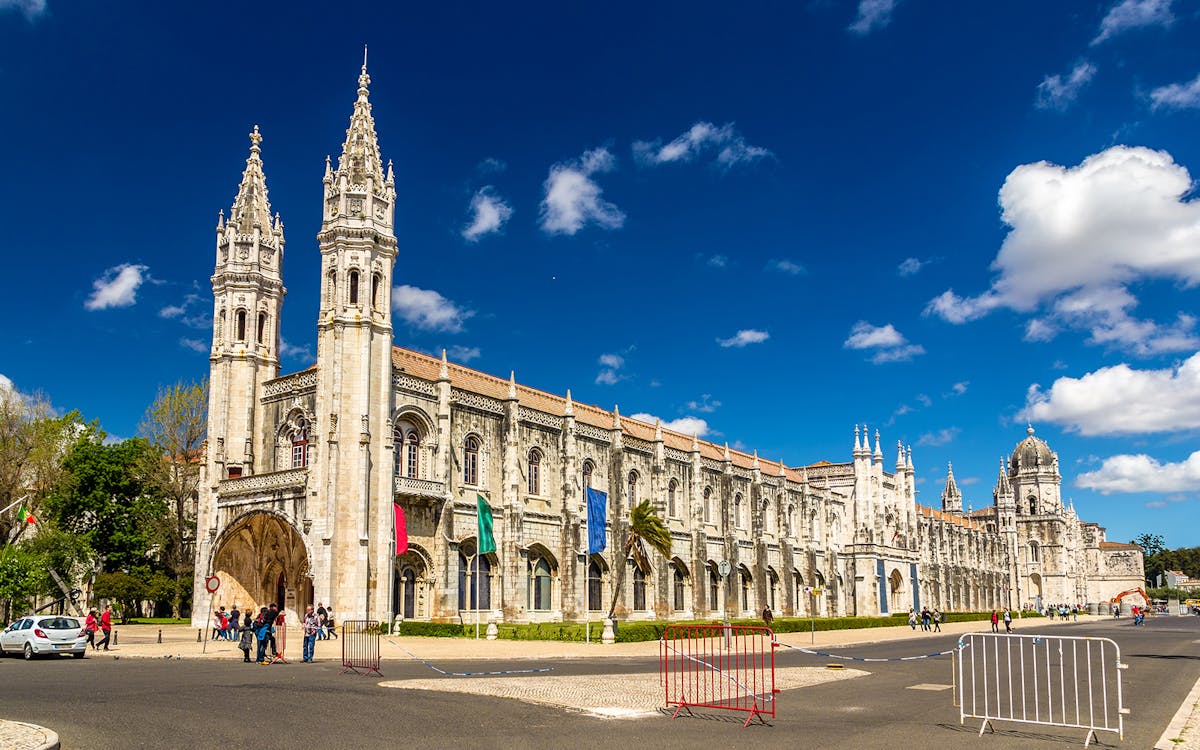
Why you must visit the Jerónimos Monastery
Portugal was one of the most powerful and wealthy countries during the ‘Age of Discovery’. The Jerónimos Monastery is a living testimony to the glorious past of Portugal and you should plan a visit to this attraction!
In 1983, the Jerónimos Monastery along with the Belem Tower was classified as a UNESCO World Heritage site. Built to commemorate the successful journey of Portuguese explorer Vasco da Gama to India, the Jerónimos Monastery is the most important tourist attraction and one of the most visited attractions in Lisbon. Not only does the Jerónimos Monastery represent a prosperous period in Portuguese history, but it is also considered to be one of the finest examples of the Manueline architectural style in Portugal. So if you are planning a trip to Portugal, make sure that you visit the Jerónimos Monastery!
Recommended Jerónimos Monastery Tickets
Jerónimos Monastery is a very popular attraction in Lisbon. You can purchase either a Jerónimos Monastery entry ticket or club your visit to the monastery with another attraction such as the SL Benfica Stadium and Museum Tour, the Maritime Museum in Lisbon, Navy Planetarium, or the Belém Tower.
Jerónimos Monastery History
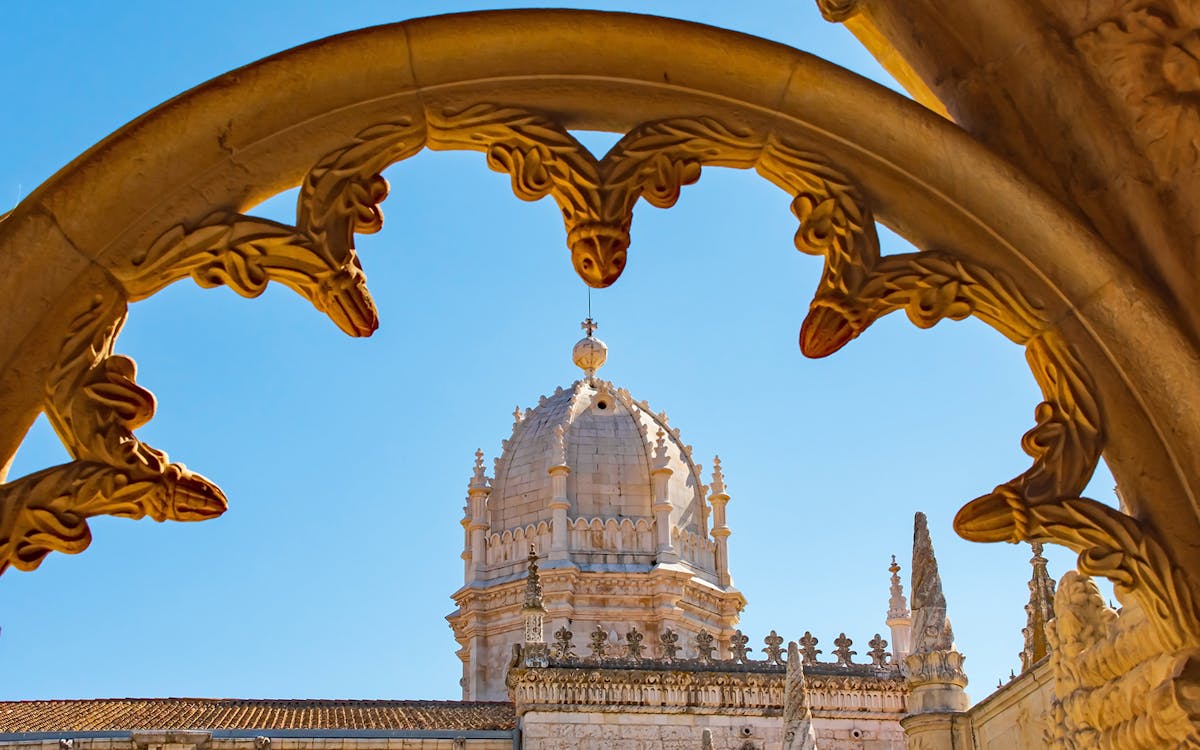
The Jerónimos Monastery was the most impressive symbol of Portuguese power and wealth during the ‘Age of Discovery.’ This Monastery was built to celebrate and commemorate the successful voyage of Portuguese explorer Vasco da Gama to India. In 1502, King Manuel I ordered the Jerónimos Monastery to be built on the site of a hermitage that was founded by Prince Henry the Navigator. Ironically the hermitage, which was the predecessor of the Jerónimos Monastery, was also the place where Vasco da Gama and his crew spent their last night praying in Portugal before embarking on their voyage to India.
The Jerónimos Monastery was originally populated by the monks of the Order of Saint Jerome or the ‘Hieronymites,’ whose spiritual job was to provide guidance to sailors and to pray for the King’s soul. When the religious orders were dissolved in 1883, the Jerónimos Monastery was abandoned by its people. Today, Jerónimos Monastery is the final resting place for the Portuguese royal family. Over here, you can even find the tombs of Vasco da Gama, King Manuel, King Sebastião, and the famous Portuguese poets Fernando Pessoa and Alexandre Herculano.
Jerónimos Monastery's Unique Architecture
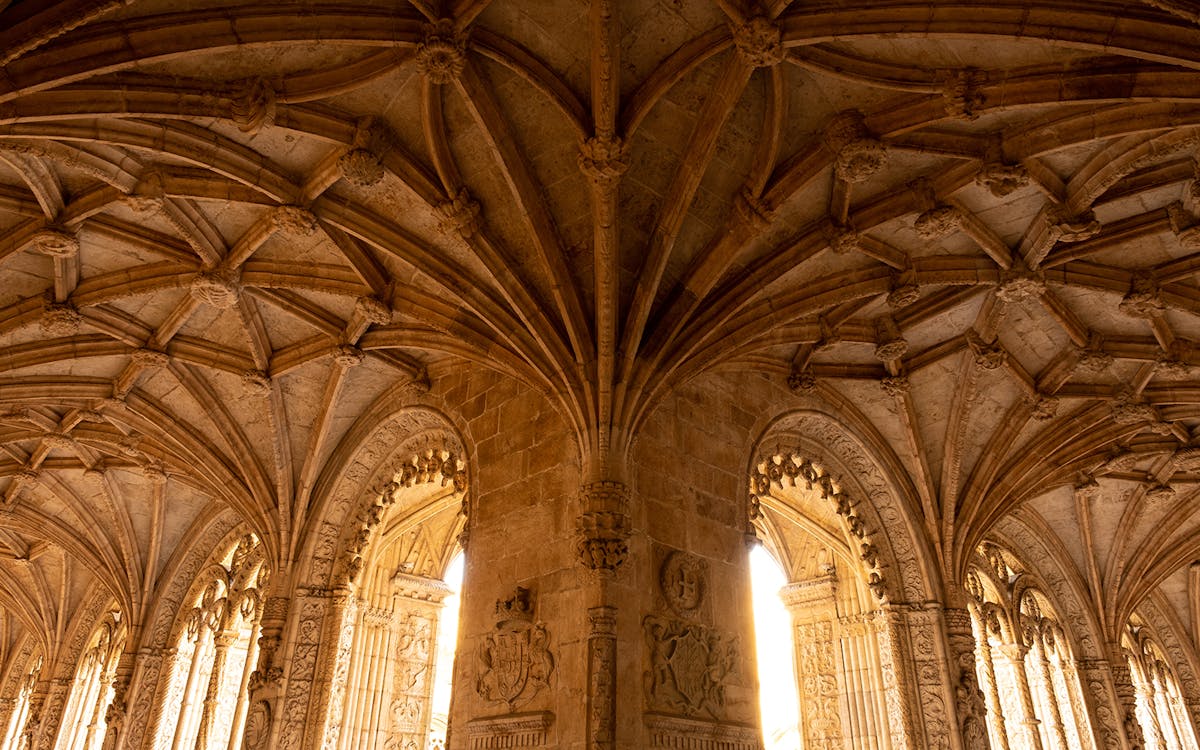
The Jerónimos Monastery, which took almost one hundred years to build, is one of the finest and most beautiful examples of European Gothic or Manueline architecture. This architectural style is synonymous with glorifying the great ‘discoveries’ of the age and is characterized by elaborate sculptural details and maritime motifs.
The ornate exteriors of the Jerónimos Monastery have richly detailed columns that are carved with maritime symbols such as coils of rope, sea monsters, corals, and other sea motifs that are evocative of the interest in world exploration at sea during that time. The ornate exterior of the monastery has scalloped arches, twisting turrets, gargoyles, and columns intertwined with leaves, vines, and knots.
The former entrance to the Refectory can also be found here. With its beautifully reticulated vaulting and tile decorations on the walls that depict the Biblical story of Joseph, the Refectory hall is one of the highlights of the Jerónimos Monastery.
The grand exterior of the Jerónimos Monastery is complemented by its equally spacious interiors with octagonal piers that are richly decorated with reliefs. Outside the Jerónimos Monastery, you can even find a beautiful garden that has hedges trimmed in the shapes of the various municipal coats of arms of Portugal. This garden was laid out in 1940, and it leads to a small park that is faced by a row of sixteenth-century-style houses that are home to traditional restaurants with outdoor seating.
Inside Jerónimos Monastery
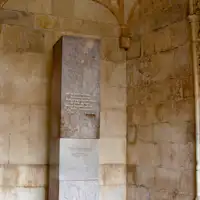
Tomb of Fernando Pessoa
Fernando António Nogueira Pessoa was a Portuguese poet, writer, literary critic, translator, publisher, and philosopher known the world over. Pessoa was one of the most significant Portuguese literary figures in the twentieth century. His tomb, which you can find at the Jerónimos Monastery, was made by the master sculptor Lagoa Henriques.
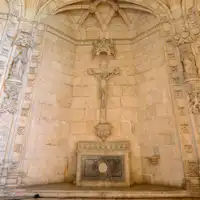
Tomb of Alexandre Herculano
Another Portuguese great buried at the Jerónimos Monastery is Alexandre Herculano. Herculano was a famous romantic poet, novelist, historian, journalist, farmer, and liberal politician from Portugal. His remains were transferred to the Jerónimos Monastery in 1888. The Chapter House at the Jerónimos Monastery is the home of the tomb of Alexandre Herculano.
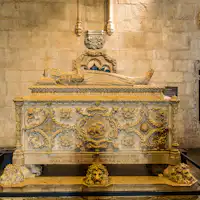
Tomb of Vasco da Gama
The Jerónimos Monastery was built to celebrate and commemorate Vasco da Gama’s successful sea voyage to India. So the final resting place of the acclaimed Portuguese explorer was the Jerónimos Monastery itself. Initially, Vasco da Gama’s remains were initially located in the monastery of Nossa Senhora das Relíquias near the town of Vidigueira, but were later shifted to the Jerónimos Monastery in 1880.
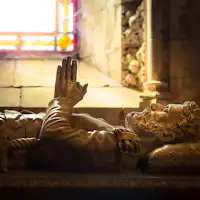
Tomb of Luis de Camões
Luis de Camões is credited with writing ‘The Lusiads,’ a Portuguese epic poem, in 1572. To date, Camões’ work is believed to be the most important work of Portuguese literature. The tomb of Luis de Camões is located in the Jerónimos Monastery. A quill, book, and harp are carved on his tomb and these three items serve as an allegory and reminder of his life as a poet.
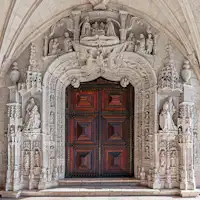
South Façade/South Portal
The shrine-like South Façade or South Portal of the Jerónimos Monastery is the most significant portal of its time. It is considered to be the most detailed portal of the Manueline period. Designed by Diogo de Boitaca, the south portal was built between 1516 and 1518 by João de Castilho and his work team.

Confessionals
The Confessionals of the Jerónimos Monastery are richly decorated with elaborately carved pillars and beautiful stained glass windows. The twelve confessionals inside the Jerónimos Monastery were all designed and completed within the first half of the sixteenth century. When you are visiting the Jerónimos Monastery, do take some time to marvel at and admire the intricately decorated Confessionals of the monastery.
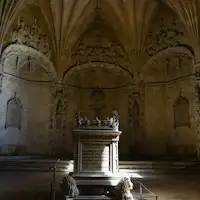
Chapter House
Apart from housing the tomb of Alexandre Herculano, the Chapter House at the Jerónimos Monastery is also the home of the tombs of famous Portuguese writers and Presidents. The construction of the Chapter House began in the 1500s, but its vaulted ceiling and interior decorations were completed in the nineteenth century.
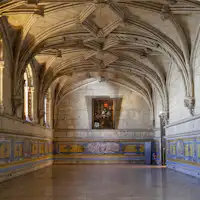
Refectory
Designed by Leonardo Vaz, the Refectory is one of the main highlights of the Jerónimos Monastery. It served as the dining area for the Hieronymites’ monks. Decorated with sixteenth-century Azulejo panels, the Refectory has a beautiful Lion fountain outside where the monks used to wash their hands before their meals. The panels in the Refectory depict the miracle of bread and fish and some scenes from Joseph’s life.
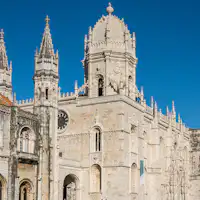
Church of Santa Maria de Belém
Designed like a Latin Cross, the Church of Santa Maria de Belém houses the tombs of King Manuel I and Queen Maria. It is made up of three uniform naves, supported by six pillars which in turn support the ornately decorated, high vaulted ceiling of the Church.
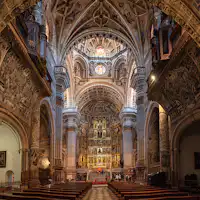
Baptismal Church
To the left of the main Chapel, you will see an austere Church, his is the neo-Manueline Baptismal Church which was initially dedicated to Saint Leonard. In the nineteenth century, the Church was transformed into a Baptistry. You can see a Baptismal font, dating back to the same era, running across the Church.
Best Time to Visit Jerónimos Monastery
The best months to visit the Jerónimos Monastery would be from March to May and from September to October. The best time to visit during these months is between 12 pm and 2 pm. If you are visiting Jerónimos Monastery during the high season, try to come at the opening time or even earlier if possible. You will also be able to avoid the crowds at the Jerónimos Monastery if you reach the attraction early during the weekdays.
The best months to visit the Jerónimos Monastery would be from March to May and from September to October. The best time to visit during these months is between 12 pm and 2 pm. If you are visiting Jerónimos Monastery during the high season, try to come at the opening time or even earlier if possible. You will also be able to avoid the crowds at the Jerónimos Monastery if you reach the attraction early during the weekdays.
Jerónimos Monastery Opening Hours
- From October-April, the Jerónimos Monastery is open from 10 am to 5:30 pm
- From May-September, the Jerónimos Monastery is open from 10 am to 6:30 pm
- The Jerónimos Monastery remains closed on the 1st of January, Easter Sunday, 1st of May, and 25th of December every year
How to get to Jerónimos Monastery
- By Train: If taking the train from Central Lisbon, head to Cais do Sodré towards Cascais and stop at the Belém station
- By Tram: Take Tram 15 to the Mosteiro Jerónimos.
- By Bus: Bus routes 727, 28, 729, 714, and 751 will all take you to the Jerónimos Monastery..
- By Ferry: Take the ferry to the Belém ferry terminal.
Restaurants near Jerónimos Monastery

A 3-minute walk from the Jerónimos Monastery, the La Follia de Belém restaurant is open for both lunch and dinner. The restaurant serves Italian cuisine and is vegetarian-friendly. Try it out when visiting Jerónimos Monastery!
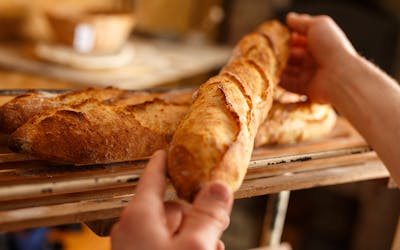
Pão Pão Queijo Queijo is a reasonably priced restaurant that is within walking distance from the Jerónimos Monastery. You will get fast service and dishes made from the freshest ingredients at this quick lunch place. Their menu includes some delicious and freshly-made pitas, baguettes, and salads.

The pet-friendly and vegan-friendly Miolo is a Portuguese eatery that is great for coffee and brunch. A local favorite, Miolo is an eatery that serves delicious homemade dishes which taste as good as they look!
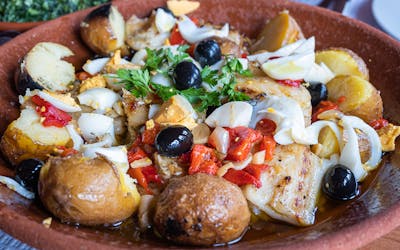
Opened in 1974, the Flor dos Jerónimos serves simple and traditional Portuguese cuisine. The restaurant is very well-located and has great access to the city center, complete with a direct view of the Jerónimos Monastery.

With a great location and vegetarian, vegan and gluten-free options, the Taberna dos Ferreiras serves Mediterranean, European and Portuguese cuisine. Located within walking distance of the Jerónimos Monastery, the restaurant is a must-visit.
Jerónimos Monastery Facts that you Probably Didn’t Know
- By 1496, Portugal was deep into the ‘Age of Discovery.’ The Jerónimos Monastery was supposed to be built in the same year, but King Manuel I first took permission from the Pope before beginning the monastery’s construction in 1502.
- The actual name of the monument is ‘Mosteiro de Santa Maria de Belém.’
- Pastel de Natas, a traditional Portuguese dessert, is believed to have been invented by the monks in the Jerónimos Monastery.
- The Jerónimos Monastery was one of the few buildings in Portugal that remained unaffected by the Great Earthquake of 1755.
- The Jerónimos Monastery is one of the seven wonders of Portugal.
- The building of the Jerónimos Monastery was completely funded by the money that came from various sea explorations.
- Jerónimos Monastery was designated a UNESCO World Heritage site in 1983.
Jerónimos Monastery Insider Tips
- The Jerónimos Monastery is one of the most visited attractions in Portugal, so book your tickets to visit the attraction online and in advance.
- Wear comfortable footwear when visiting the Jerónimos Monastery since you will be walking a lot.
- Keep in mind that you’re visiting a monastery, so wear modest and comfortable clothes.
- When booking tickets online, choose from entry tickets or combo deals.
- The best months to visit Jerónimos Monastery are from March to May and from September to October.
- Plan your visit to the Jerónimos Monastery between 12 pm and 2 pm.
- You can club your visit to the Jerónimos Monastery with other nearby attractions such as the Belém Tower.
Things to do around Jerónimos Monastery
FAQs
King Manuel I, started building the Jerónimos Monastery in 1502.
Jerónimos Monastery is one of the most visited attractions in Lisbon. More than 2.5 million visitors visit the Jerónimos Monastery annually.
The Jerónimos Monastery remains closed on 1st January, Easter Sunday, 1st May and 25th December.
The best time to visit the Jerónimos Monastery is between 12 pm and 2 pm.
It will take you around 1 to 2 hours to explore the Jerónimos Monastery.
Some of the main highlights of the Jerónimos Monastery are the Refectory Hall, the Tomb of Vasco da Gama, the Chapter House, and the Confessionals.
The Belém Tower, Padrão dos Descobrimentas and the Jardim Botânica d’Ajuda are some of the closest attractions to the Jerónimos Monastery.


